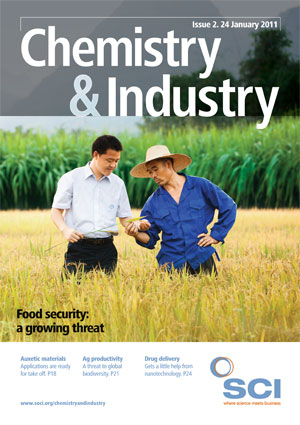The scandal of dioxin contaminated animal feed that spread across Europe has led Germany to launch an action plan to reinvigorate checks and balances on feed. The new rules come as the European feed industry and the organisations responsible for monitoring the food chain are coming under increasing scrutiny. The scandal in Germany follows two other major European dioxin contamination events in Belgium in 1999 and Ireland in 2008.
Germany’s new rules for feed production will mean greater checks on feed producers, separating animal feed ingredient manufacturers and suppliers of substances for technical industry, as well as the establishment of a dioxin early-warning system. The crisis began when Harles and Jentzsch, a feed ingredient supplier, sent 2500 t of dioxin-contaminated lipids to 25 German feed manufacturers. The lipids were then incorporated into animal feed and sent to farms all over Germany. Discovery of the contamination at the end of December 2010 led to a Europe-wide alert and 4709 German farms were closed, mostly in the Saxony region. Around 400 farms remain closed. Tests on the feed found that 18 out of 30 samples were above the maximum permitted dioxin levels, with one sample 77 times over the legal limit.
Tests on poultry, eggs and pork products showed some instances of contamination exceeding EU limits. More than 100,000 eggs were destroyed as a result, although some of the contaminated eggs did make their way to food manufacturers in the UK, leading supermarkets to recall certain products.
Dioxin is a catchall term for a number of different chemicals, including polychlorinated dibenzodioxins, polychlorinated dibenzofurans and dioxin-like polychlorinated biphenyls. In total there are 29 chemicals in the dioxin family giving each source of these chemicals a unique ‘fingerprint’ that authorities can identify using high resolution mass spectroscopy. This fingerprint can be used to track down the source of the contamination. Dioxins are exceptionally toxic and have been linked to cancer, hormone disruption, reproductive effects, skin toxicity and immune system disorders. This has led regulatory authorities to set extremely low acceptable thresholds for dioxins. EU limits for dioxins in eggs are 3pg/g of fat and 2pg/g of fat in chicken meat.
Martin Rose, principal scientist, environmental contaminants at the UK Food and Environmental Research Agency, says: ‘There are two main ways dioxins get created. One is uncontrolled incineration or combustion, (there were concerns about emissions from incinerators that resulted in regulations that came into force around 1990). Inefficient incineration could result in the formation of dioxins at low levels. The other main route of formation is inadvertent byproducts in the manufacture of organochlorine chemicals – eg PCBs or some pesticides.’
In the Irish and Belgian incidents, the dioxin contamination of feedstuffs was the result of inappropriate use of transformer oils. In the German incident, the fingerprint was different and tests have shown that the fatty acids came from a biodiesel plant.
Rose says that in 2007 and 2008 the EU recommended the number of tests that regulatory agencies carry out on food samples. However, these targets have fallen by the wayside and testing has, in general, fallen, he adds.
A UK Food Standards Agency spokesperson says that foodstuffs entering the country are not routinely tested for dioxins. ‘Analysis is very expensive and random testing is of minimal benefit. Centralised resources are directed at investigations and surveys in high risk areas.’
As to whether authorities should be carrying out more testing, Rose says: ‘You’re asking someone who works for a lab doing routine and nonroutine/ research testing so I’m always going to say more testing is needed.... More testing would improve the quality of the food chain with respect to dioxins.’
Dioxin contamination: there’s an app for that
One company has already capitalised on the German dioxin crisis with an iPhone application that can tell consumers if the eggs that they have purchased are from a contaminated batch. Barcoo created an application that can check the code on each egg and cross-reference it with a list of suppliers that were caught up in the dioxin incident.





